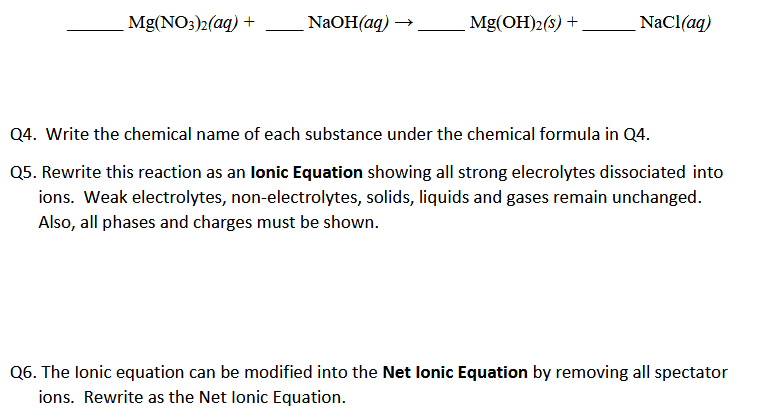CHEM 1040 Chapter Notes - Chapter 4: Acid Strength, Single Displacement Reaction, Sodium Chloride
Document Summary
Electrolyte is a substance that dissolves in water to give an electrically conducting solution. Non-electrolyte is a substance that dissolves in water to give a non-conducting solution. Strong electrolyte exists in solution almost entirely as ions. Weak electrolyte dissolves to give a relatively small percentage of ions. Molecular equation - all compounds are written as molecular substances. Total ionic equation is a chemical equation in which all highly soluble ionic compounds are written as dissociated ions. A total ionic equation must always be balanced and it must meet the two important criteria: All entities on one side of the equation must be accounted for the other. The net electrical charge on both sides of the equation must be the same. Net ionic equation is a chemical equation that includes only the entities that react during the reaction. It does not specify which reactants were mixed to result in this reaction. Hcl(aq) + naoh(aq) nacl(aq) + h2o(l)




